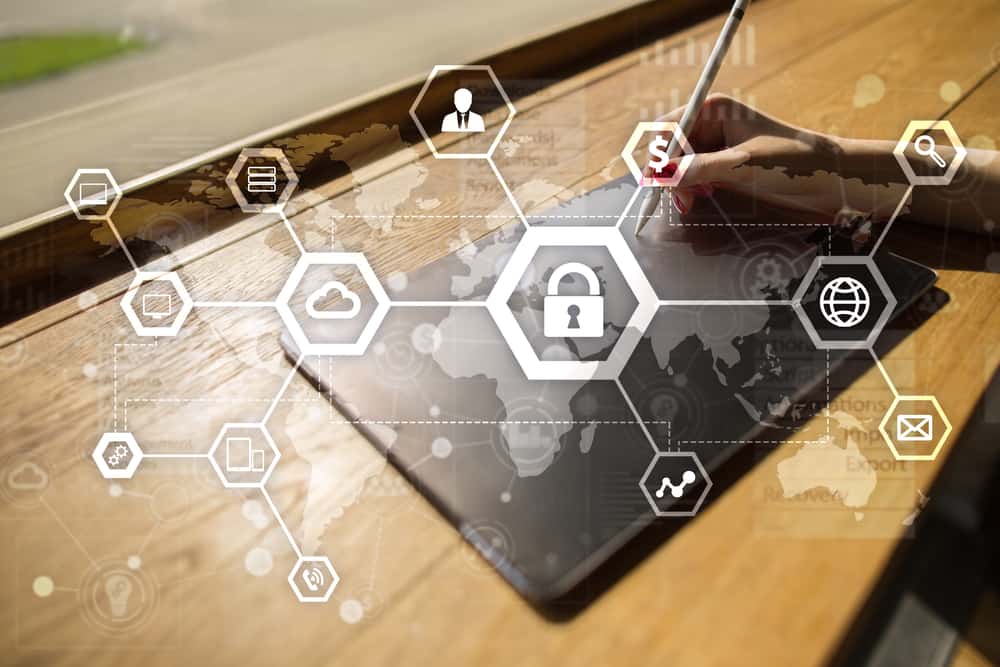The world of cybersecurity is constantly changing. Attackers are always looking for new exploits or loopholes in the latest software or operating systems, and are utilizing new psychosocial tactics to gain access to vulnerable information through people at lucrative businesses. That’s why it’s critical for shippers and other businesses to always be on the lookout for the latest threats. It is important to understand how hackers may use these new techniques and find ways to counteract them before any information is leaked. Here, you’ll find three cybersecurity threats that are predicted to be on the rise in 2020 and some suggestions on how to counteract these threats in the world of shipping and beyond.
1. Internet of Things Attacks
The Internet of Things (or IoT, for short) is the various smart devices in any given space that are connected to the same network. The smart devices in use could be anything from in-home speakers to Google Homes and Amazon Echos. Because more and more households now have at least one smart device, more hacking groups have turned to these as points of entry into networks. Even more importantly, many businesses have IoT devices – usually smart thermostats or communication hubs.
These devices could offer highly valuable entry points for hackers since they could sneak malware or security bypasses onto these devices with simple exploits. While relatively few major hacks have occurred on IoT networks to date, as more devices are added to networks in homes and businesses, these places become increasingly enticing – potentially leading to an uptick in hacking attempts in 2020.
To counteract IoT-based hacks, there are a few simple steps to take. Make sure your IoT devices are provided by reputable companies with easily accessible firmware updates. These companies will roll out updates relatively quickly when exploits are revealed. You should also make sure to consistently check for firmware updates across IoT devices to make sure that everything is up to date, as older versions are more likely to have exploitable code. Finally, make sure that you keep track of all IoT devices connected to your local network. Regularly evaluate whether the cost of security burdens caused by a device are outweighed by the benefits to your home or business, and remove devices that may be causing unnecessary security risks as you go.
2. Supply Chain Intrusions
While supply chains have always been a weak point in cybersecurity due to the interfacing of multiple companies with different security protocols, 2020 may see more intrusions in these supply chains. As supply chain management gets increasingly digitized, more opportunities for data breaches are likely. Furthermore, some supply chain companies rely on contract work for their labor and data management. Contract workers generally are less invested in company security and are less likely to be briefed on secure management practices; a double-hitter that’s likely to cause more problems for security than before.
To work against these supply chain breaches, streamline your security access as much as possible. As more and more contract workers come into the system, you’ll need to figure out exactly what information each of those workers needs to access. For example, a lax protocol may give a material loading worker access to delivery shipment points. But why would those loading workers need that information if they are provided loading directions already? Finding points of access (like the one used by loading workers in this instance) and patching them will allow you to reduce the chance of security intrusions significantly.
3. Insider Threats
One of the most insidious and potentially harmful hacks that companies face in 2020 is insider exploitation. Insider attacks come in two categories, with some intending to be extremely malicious and others simply resulting from sloppy practices by a few employees. In some cases, employees will have a specific plan to exploit data sources or hold back important information for a payout. They will siphon off information or money with their knowledge of security protocols and insider company information, giving them an edge over ordinary hackers. Alternatively, some employees may not follow security protocols as necessary – allowing hackers entry to sensitive information simply because the employees were careless in their data management.
Counteracting these attacks relies almost entirely on proper business management and instilling good values in employees. Upon first hiring a new employee, managers should instill good data management practices, and regularly screen those employees early to ensure protocols are maintained. For the more insidious, carefully acted-out insider plans, less can be done upfront. Instead, companies should try to maintain positive values and ethics at the corporate and individual employee level while still giving employees the freedom to understand why the company is taking certain actions. Insider breaches tend to happen when employees strongly disagree with the actions of a company, so staying away from these morally ambiguous areas could help significantly.
Cybersecurity is a growing field, and understanding the threats that companies face in the digital realm is an important aspect of any company’s business plan – not just those in the shipping world. The three threats discussed here pose big problems for companies and individuals in 2020. If you can identify these issues, you can save millions of dollars in lost revenue.




